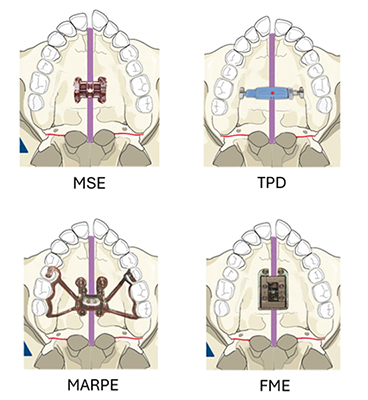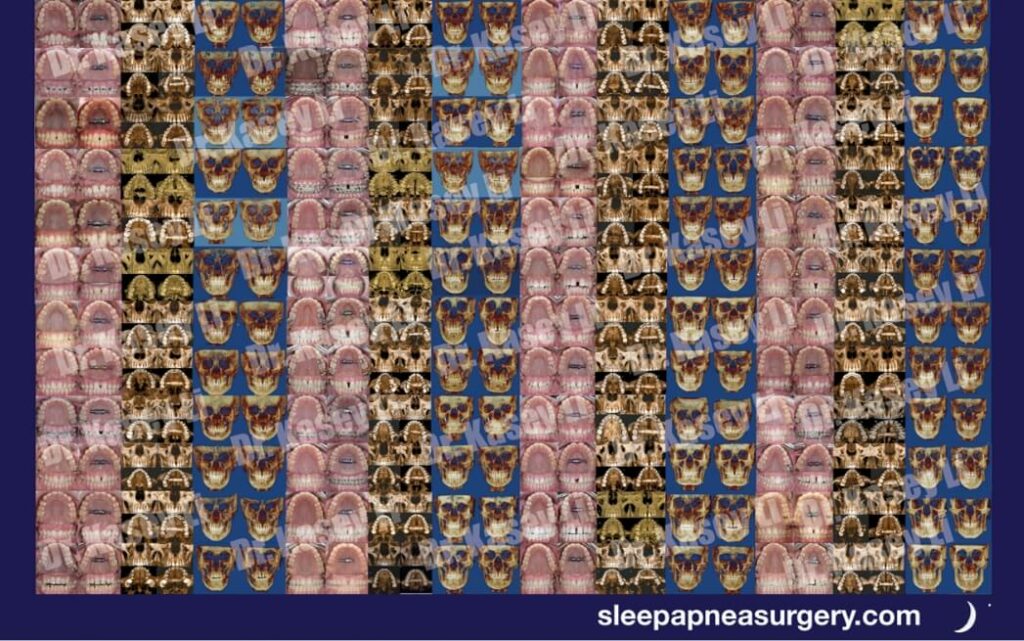Nasomaxillary Expansion overview
The EASE procedure was developed by Dr. Li in 2017. The objective of the operation was to maximize the nasal airway expansion while minimizing the undesired side effects. The operation focuses on the entire nasomaxillary complex, including the posterior region of the maxilla without excessive flaring of the dentoalveolar aspect.
Nasal expansion directly improves nasal respiration. The reduction of nasal resistance leads to lower airway velocity and reduced negative nasal pressure on inspiration, leading to improved patency in the retropalatal/retroglossal airway.
EASE Treatment Course:
Selection of the device:
- Dr. Li uses 4 different devices including MSE, custom MARPE, TPD and FME
- The choice of the device depends on the patient’s age, gender, anatomy and treatment objectives
Preoperative requirement:
- CBCT scan
- Itero scan if MARPE/FME are recommended
Intraoperative course:
- Surgery takes approximately 60 minutes under anesthesia
- Discharge within 30 – 45 minutes after surgery
Postoperative management:
- Pain control consists of Ibuprofen (such as Advil) 600 mg every six hours
- Tylenol 325 mg every four hours
- Hydrocodone can be taken instead of Tylenol if necessary
- Pain medication is typically needed for a few days
- No restriction in physical activity after 3 days
- Diet of soft food such as well-cooked pasta, fish, milk shakes and soup for a few days
Expansion course:
- Duration can range between 6 – 12 months
- Expansion starts within 2 – 4 days of the operation
- The rhythm of expansion is directed by Dr. Li
- There is usually no pain during the expansion but some pressure may be felt
- Weekly communication with Dr. Li after returning home is necessary to monitor the expansion progress (for out-of-town patients)
- There is no major dietary restriction during the expansion phase other than avoiding and chewy food such as bagels, Dutch crunch bread, etc.
Consolidation phase:
- Orthodontics typically begin during the consolidation phase
- The device needs to remain for 4 – 5 months after the completion of the expansion
- Removal is performed under local anesthesia at Sleep Apnea Surgery Center


